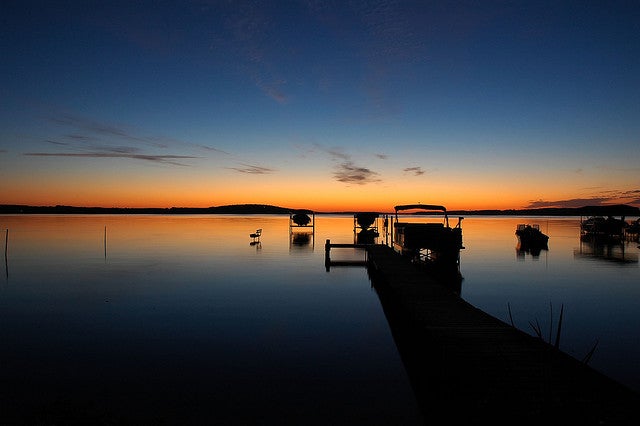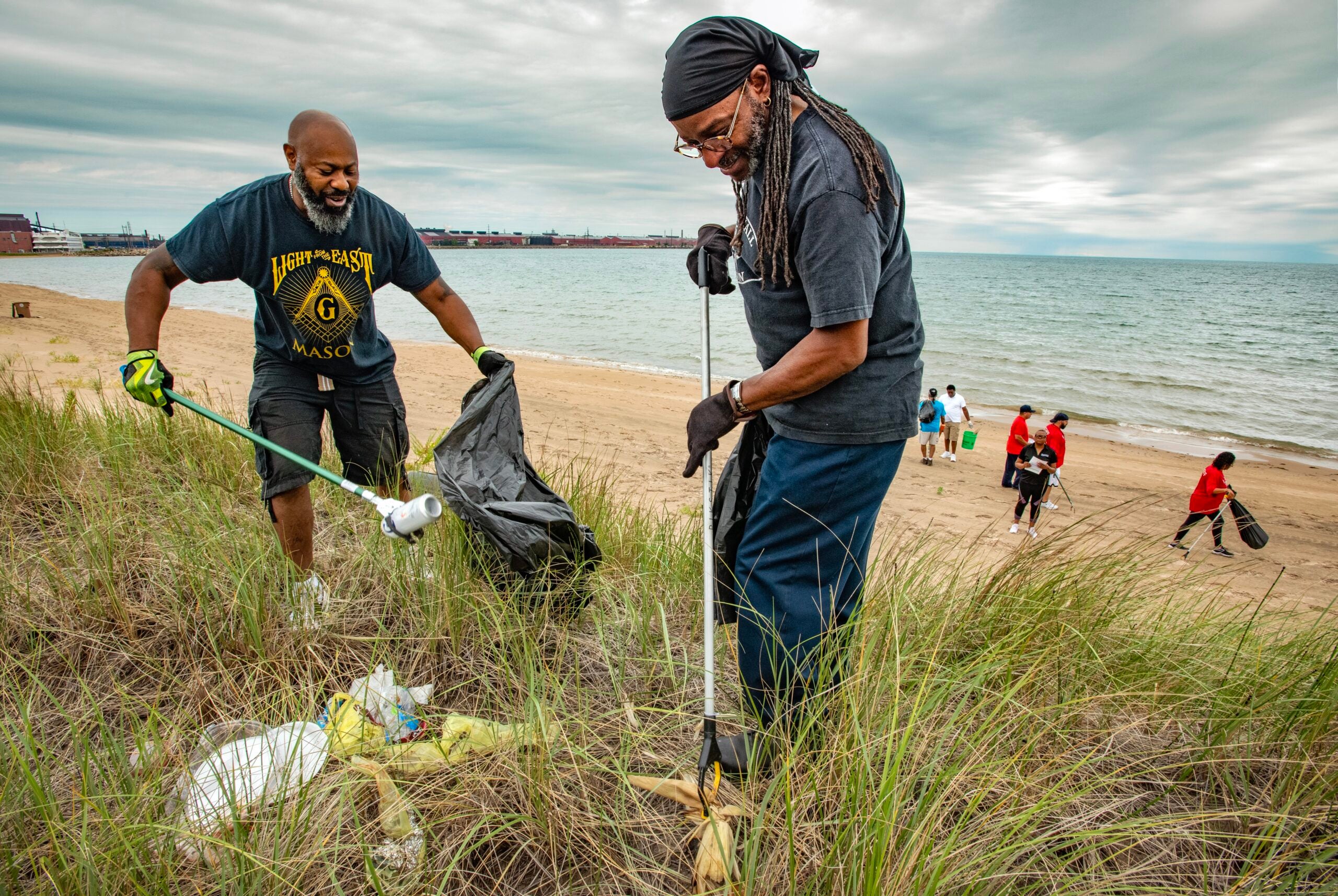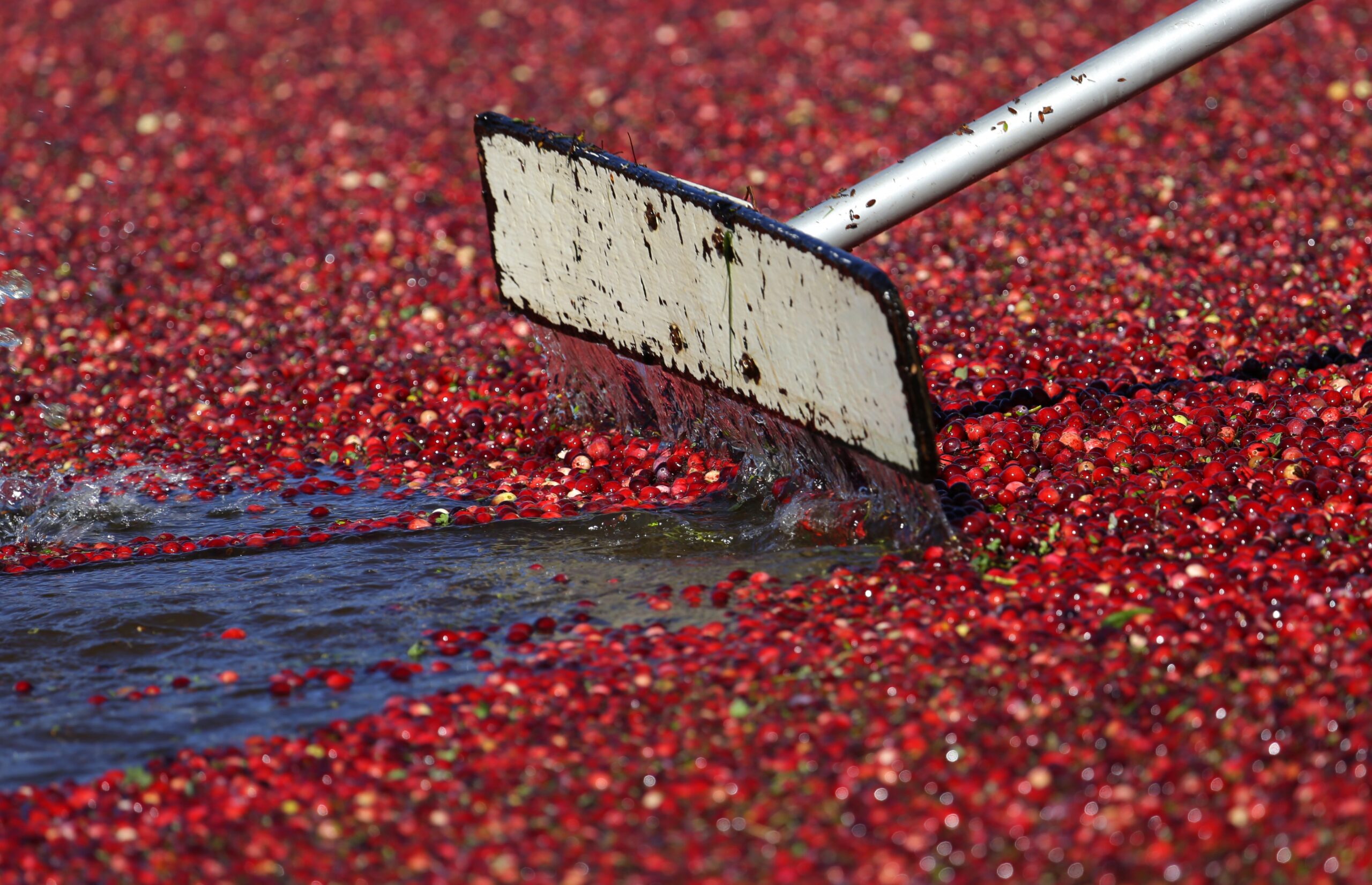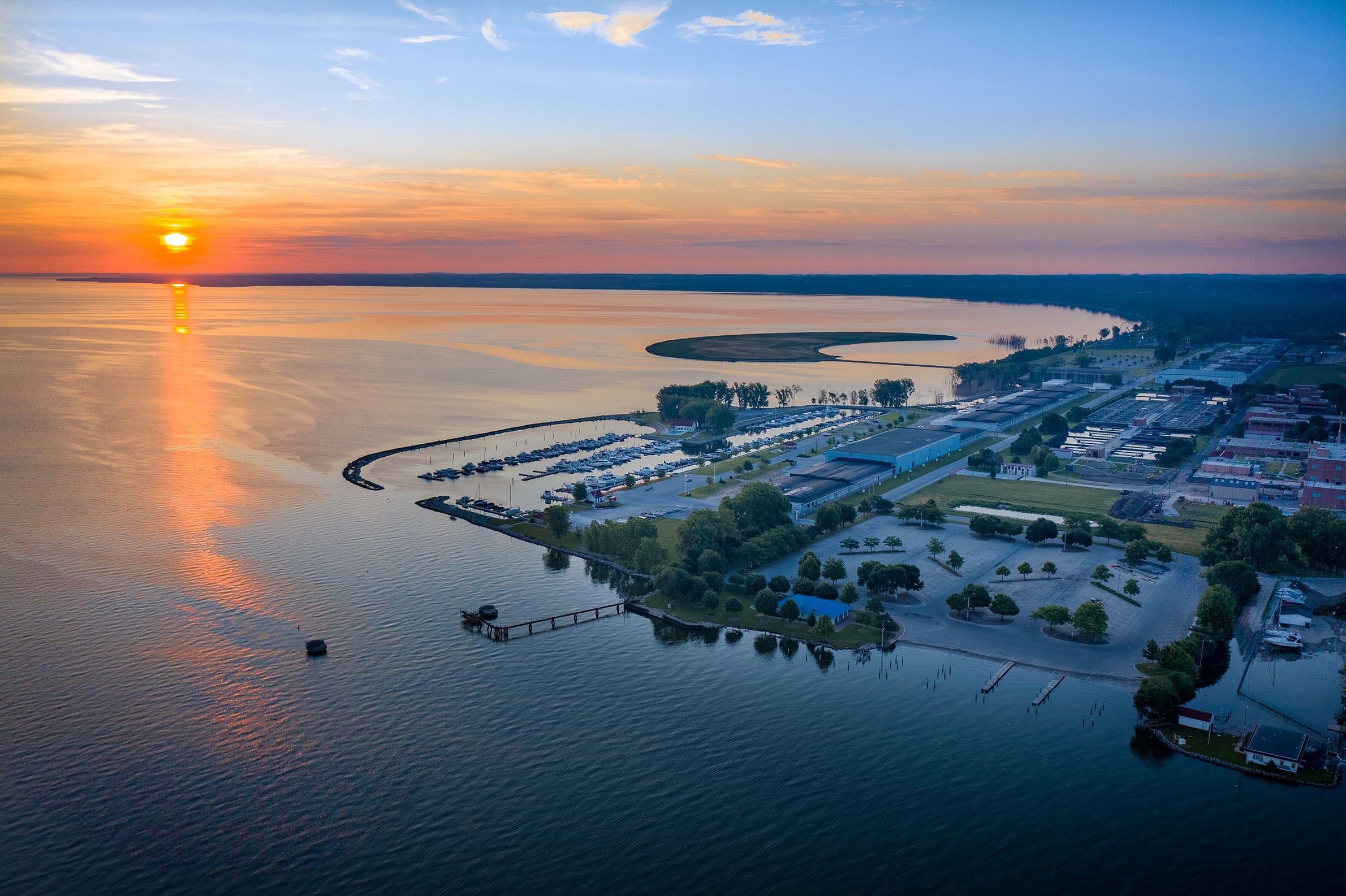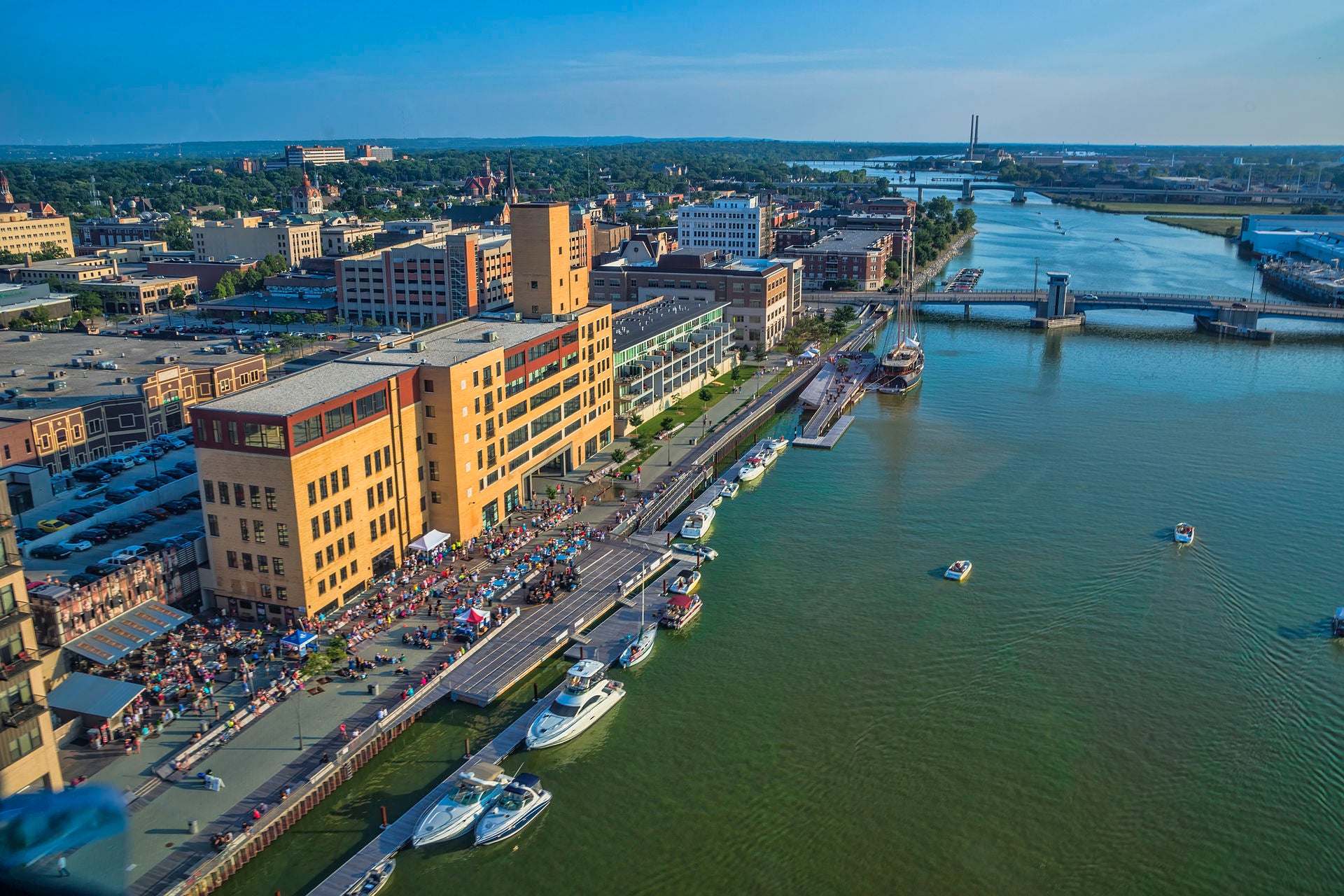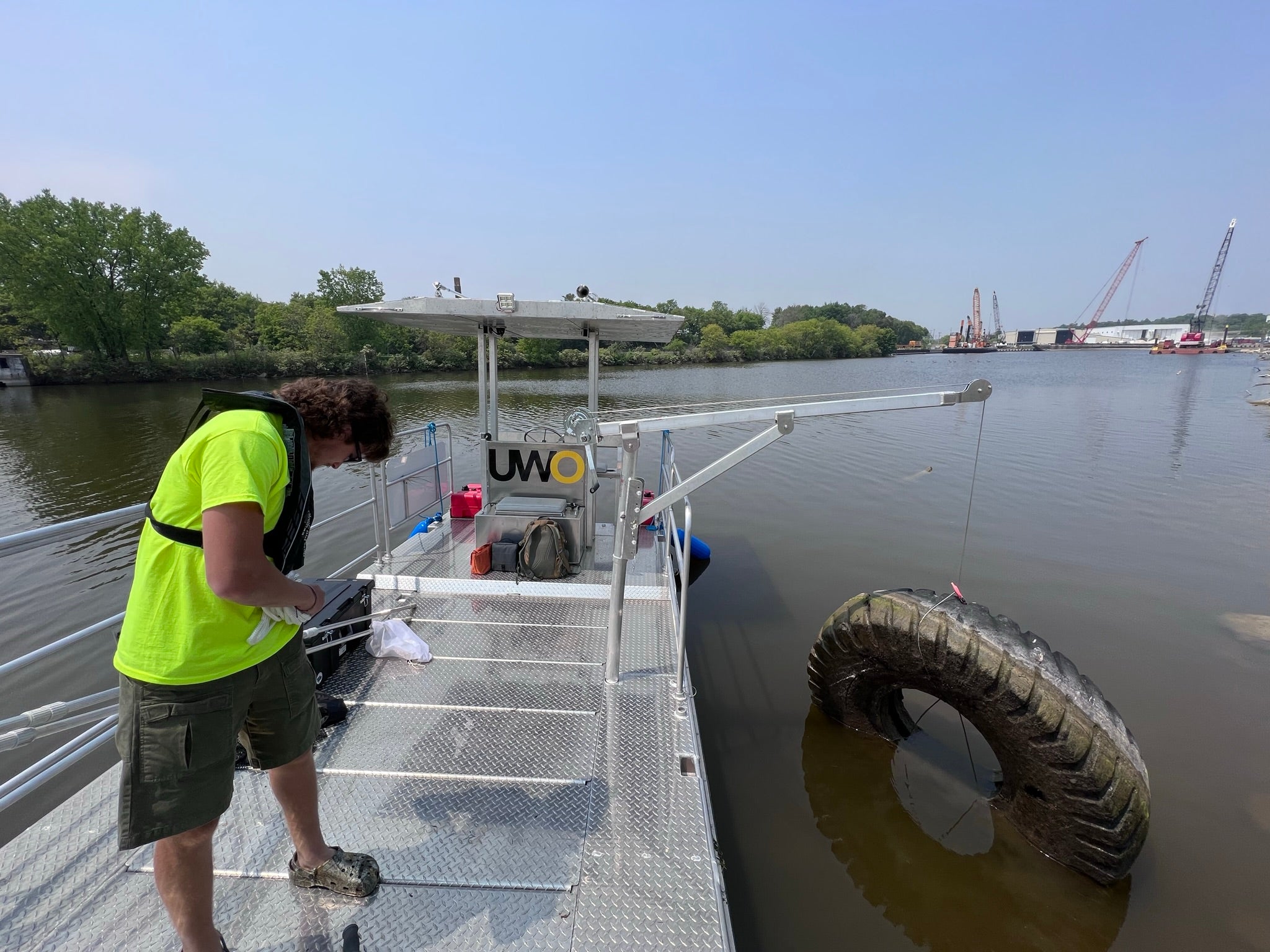Excessive algae growth and other water quality problems are harming many Wisconsin lakes, including the deepest natural inland body of water in the state, Big Green Lake.
But the lake, which lies 25 miles west of Fond du Lac, isn’t just Wisconsin’s deepest waterbody. It also seems to have a deep amount of support, with some fairly deep pockets trying to call attention to its problems.
Recently, a prominent resort called Heidel House helped the Green Lake Association take journalists and key stakeholders on a boat tour. Several people with homes along Green Lake, like Kent DeLucenay, were among those present. DeLucenay said his family built their house 15 years ago and loves the area.
Stay informed on the latest news
Sign up for WPR’s email newsletter.
“It’s been a magnificent family retreat,” he said. “Our children, our grandchildren have all enjoyed spending time here. Each of them has separately said, ‘Why don’t we just live here?’”
But DeLucenay said he’s also noticed the slow decline in water quality. While zebra mussels have helped clarify the water to an extent, phosphorus and nitrogen runoff from farms, lawns and other sources have led to the excessive growth of weeds and algae, especially during warmer months. Fish kills have occurred.
A longtime lakeside resident, Bur Zeratsky of the Green Lake Conservancy said things seem to get worse after big rainfalls.

Weeds clogging the Big Green Lake shoreline. Chuck Quirmbach/WPR

Treatment plants aerating sewage near the lake. Chuck Quirmbach/WPR
“In 2008 in particular, I stood at the bridge at County A and watched water flow under the bridge that was more like coffee or tea than, you know, water you’d like to swim in,” said Zeratsky.
The University of Wisconsin-Madison Nelson Institute for Environmental Studies is among the agencies working at Big Green Lake. Professor Chris Kucharik said one challenge is that because the lake is big and deep — 236 feet at its maximum depth — it takes many years for pollutants to leave.
“Even if we are drastically able to minimize the amount of nutrients that are coming into the lake, there still might be a long period of time before you see drastic improvements in the water quality,” Kucharik said.
Still, some agencies are trying pollution prevention. At the wastewater treatment plant of the Green Lake Sanitary District, aerators or air injectors help with the sewage from about 1,000 homes. Administrator Charlie Marks said he’s also able to use part of the district’s tax levy to give grants to landowners in the watershed to help pay for projects to reduce runoff.
“The idea there is when the state can bring in certain funds — whether it’s (for) a grass waterway, a sediment control basin — what we can do is bring in that last financial piece that makes it all workable for the landowner,” said Marks.
Marks said the farmers and others must promise to keep the projects going.
The state representative for the area, Republican Joan Ballweg, won’t rule out more state help to remove existing phosphorus from the lake. She calls the lake a jewel.
“We can still do better, but we have to figure out some way through science to try to care of some of the load that’s in the lake,” said Ballweg.
But UW-Madison Nelson Institute Director Paul Robbins said that the expected higher temperatures and bigger downpours brought by climate change could drive up the costs.
“If that plan, however expensive it is, is meant for today’s rainfall … by 2050, all that money will have been wasted, because you have built and engineered a system for now, instead of for tomorrow,” he said.
And Robbins said that threat is not unique to Big Green Lake.
Wisconsin Public Radio, © Copyright 2024, Board of Regents of the University of Wisconsin System and Wisconsin Educational Communications Board.

